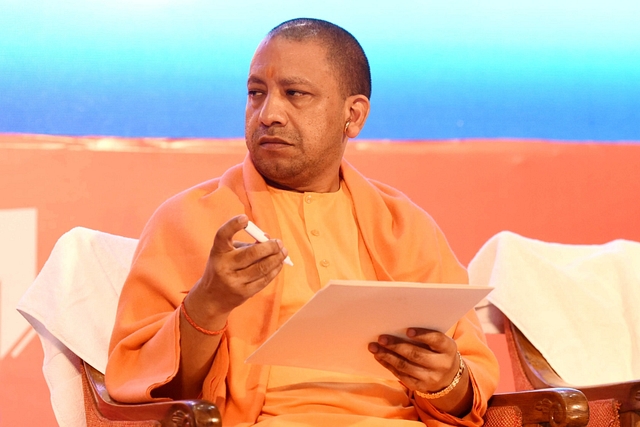
Adityanath Initiates Land Acquisition Process For ‘New Ayodhya’ Project, Samajwadi Party Joins Farmer Protests Over Airport Land Compensation
The process of land acquisition has begun for the ambitious project, which is a part of Adityanath’s mission to develop Ayodhya as a global pilgrimage city.
Uttar Pradesh Chief Minister Yogi Adityanath has taken a vital step towards realising his ambitious project — the Ayodhya 'upnagar' — a new town adjacent to Ayodhya. This project draws inspiration from the civilisational pride, aesthetics and heritage of Shri Ram's Ayodhya.
Reportedly, the team of the state Awaas Vikas Parishad (Housing Development Board) has reached Ayodhya. The process of land acquisition is set to begin.
For the land acquisition, the Adityanath government has issued a notification under section 28.
This project has been approved by the state government. The Awaas Vikas Parishad stands as the nodal agency, and formalities of land acquisition will reach a conclusive stage by the end of this week.
Reportedly, the new project will include the acquisition of 1,193 acres of land of Manjha Baretha, Manjha Tiruha and Shahnawazpur (Rs 4,000 crore has been sanctioned for it).
The new ambitious plan in Ayodhya is part of Adityanath's mission to develop Ayodhya as a global pilgrimage city with Kashi, Prayagraj and Gorakhpur — other centres of pilgrimage in close proximity.
Meanwhile, the matter of land acquisition for the proposed airport in Ayodhya is becoming complicated gradually. Women of Ganja village staged a protest for not being given enough compensation for the land acquisition. They believe that they are not being compensated fairly for their lands.
Reportedly, a Brahmin leader from Samajwadi Party Tej Narayan Pandey has taken up the issue on behalf of the farmers in the protesting villages. He has said that his party will keep fighting for the rights of farmers.
The people of some villages have protested at the banks of Saryu river.
A Dainik Jagran report says that they held their janehu in their hand and took a pledge to not vote for the Bharatiya Janata Party again.
The farmers of Dharmpur, Ganja, Kutiya village have said that they should be compensated on a good circle rate, the same way as people of other villages, such as Janaura, are being compensated for their land.